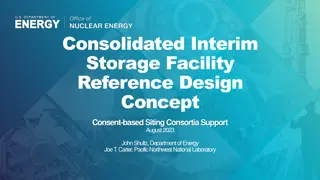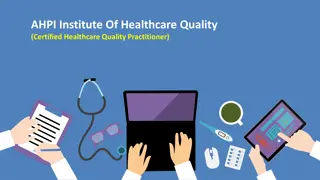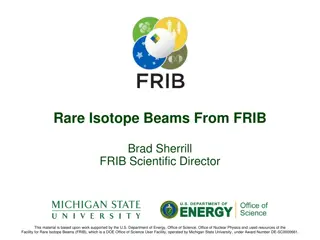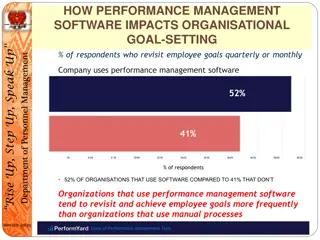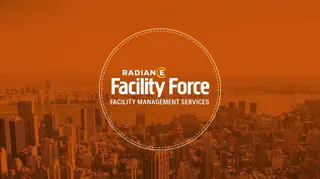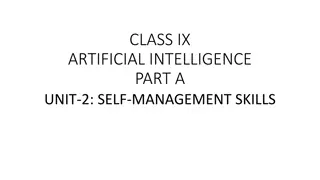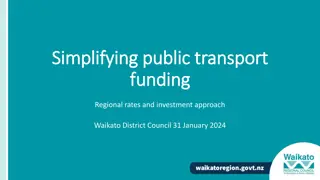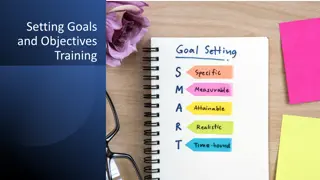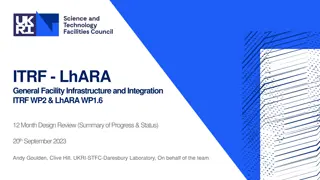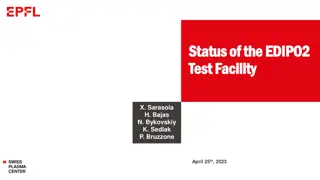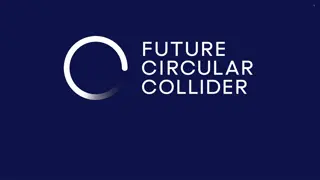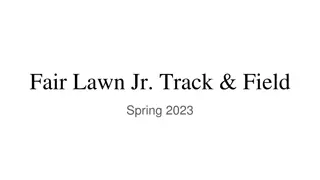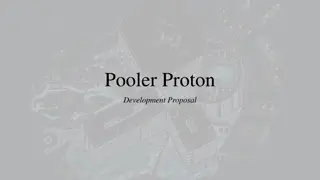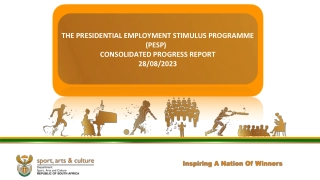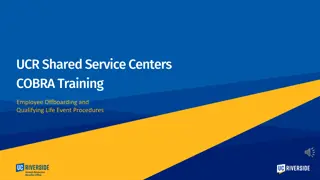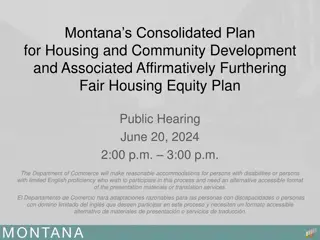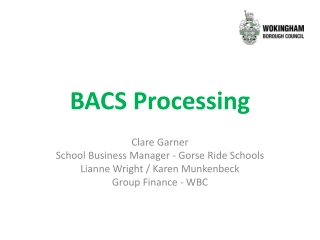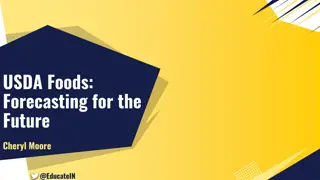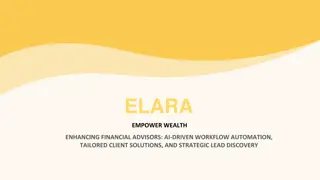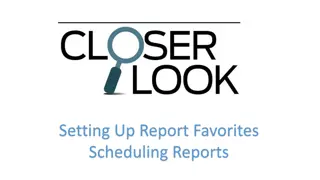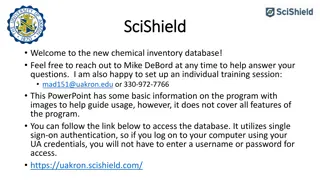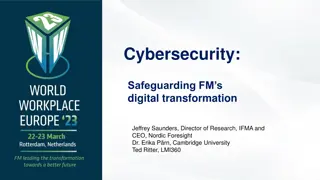Streamlining Organics Management: Setting up a Consolidated Collection Facility
Explore the benefits of a Consolidated Collection Center for organics management in Maine. This facility provides a central location for food scrap collection, allowing adequate volumes for economical processing. Learn about the types of materials that can be collected and the regulations governing these operations.
Download Presentation
Please find below an Image/Link to download the presentation.
The content on the website is provided AS IS for your information and personal use only. It may not be sold, licensed, or shared on other websites without obtaining consent from the author. Download presentation by click this link. If you encounter any issues during the download, it is possible that the publisher has removed the file from their server.
Presentation Transcript
Setting-up a Consolidated Collection Facility Mark A. King, Organics Management Specialist Division of Materials Management MAINE DEPARTMENT OF ENVIRONMENTAL PROTECTION MAINE DEPARTMENT OF ENVIRONMENTAL PROTECTION MAINE DEPARTMENT OF ENVIRONMENTAL PROTECTION www.maine.gov/dep Protecting Maine s Air, Land and Water Protecting Maine s Air, Land and Water
Consolidated Collection Center Simply put Food Scrap Transfer station Provides one central location to build-up collection Ideal for rural communities that lack space for full-scale compost facility Materials are covered each day (odor/vectors) Once full, roll-offs are taken to larger facility for processing Regulated under Department Rule Chapter 402, Transfer Stations and Storage Sites for Solid Waste MAINE DEPARTMENT OF ENVIRONMENTAL PROTECTION www.maine.gov/dep
Benefits of Consolidated Collection Allow accumulation of adequate volumes of organics, making trucking economically feasible; Allow residents to source-separate and collect food from home and bring it to one central location for delivery to a higher end-use; Helps to fulfill the demand for organics inputs at larger processing facilities; and Enhanced organics collection bolsters state s recycling rate. MAINE DEPARTMENT OF ENVIRONMENTAL PROTECTION www.maine.gov/dep
What Can Be Collected? The following items should be targeted for collection: Fruits and vegetables; Pasta and bread; Egg shells, seafood (including shells); Meat and fish (including bones); Coffee grounds Stay away from the following contaminants: Liquid materials (dairy and fryolator grease); Pet wastes (dog and cat specifically); Unbleached paper napkins; Soiled pizza boxes; Diapers and sanitary napkins; Some compostable plates, cups and utensils; and Glass, plastic or metals of any kind. MAINE DEPARTMENT OF ENVIRONMENTAL PROTECTION www.maine.gov/dep
Type IB MAINE DEPARTMENT OF ENVIRONMENTAL PROTECTION www.maine.gov/dep MAINE DEPARTMENT OF ENVIRONMENTAL PROTECTION www.maine.gov/dep
Type IC MAINE DEPARTMENT OF ENVIRONMENTAL PROTECTION www.maine.gov/dep MAINE DEPARTMENT OF ENVIRONMENTAL PROTECTION www.maine.gov/dep
Training Staff. An Exercise in Patience MAINE DEPARTMENT OF ENVIRONMENTAL PROTECTION www.maine.gov/dep
Food Recovery-Kitchen Prep. Pre-Consumer MAINE DEPARTMENT OF ENVIRONMENTAL PROTECTION www.maine.gov/dep
Food Recovery-Plate Scrapings Post-Consumer MAINE DEPARTMENT OF ENVIRONMENTAL PROTECTION www.maine.gov/dep
Separation Logistics are not that difficult Long-term consistency is very difficult Permanent feedback loop is needed to correct problems quickly How to institutionalize organics recycling? MAINE DEPARTMENT OF ENVIRONMENTAL PROTECTION www.maine.gov/dep
Residential: Curbside picked weekly MAINE DEPARTMENT OF ENVIRONMENTAL PROTECTION www.maine.gov/dep
Residential: Large Scale MAINE DEPARTMENT OF ENVIRONMENTAL PROTECTION www.maine.gov/dep
Stand-alone Collection Sites MAINE DEPARTMENT OF ENVIRONMENTAL PROTECTION www.maine.gov/dep MAINE DEPARTMENT OF ENVIRONMENTAL PROTECTION www.maine.gov/dep
Do You Have Room? MAINE DEPARTMENT OF ENVIRONMENTAL PROTECTION www.maine.gov/dep
General Facility Layout Requirements Front-Load (up to 6 yd3) 30-40 ft2 Roll-Off (20 yd3) 175-200 ft2 Area Cart (96 Gallon) 3-4 ft2 Requirement Footprint 15-25 feet 15-25 feet 25-30 feet Vertical Clearance Dimensions 30-40 feet long 10-15 feet wide 30-40 feet long 15-20 feet wide 40-50 feet long 15-20 feet wide MAINE DEPARTMENT OF ENVIRONMENTAL PROTECTION www.maine.gov/dep
Regulatory Requirements Regulated under Chapter 402, Transfer Stations and Storage Sites for Solid Waste . Mechanisms for approval may vary. Existing facility: Update to the facility Operations Manual, a Minor Revision or an Amendment to the license; A new site may require a full Chapter 402 license; Stand-alone collection sites (kiosks) not at a licensed facility may be registered using a form provided by the Department. MAINE DEPARTMENT OF ENVIRONMENTAL PROTECTION www.maine.gov/dep MAINE DEPARTMENT OF ENVIRONMENTAL PROTECTION www.maine.gov/dep
What About The Public? Does Perception = Reality?? MAINE DEPARTMENT OF ENVIRONMENTAL PROTECTION www.maine.gov/dep
Public Perception How Do You Go From This? To This? MAINE DEPARTMENT OF ENVIRONMENTAL PROTECTION www.maine.gov/dep
Emphasize Proper Management MAINE DEPARTMENT OF ENVIRONMENTAL PROTECTION www.maine.gov/dep
Options for Collected Scraps? Compost onsite = Most efficient option Compost offsite = Requires Transport Community-based site On Farm Compost Site (Compost Management Plan) Take to Anaerobic Digester (Offsite) Requires Transport several programs available MAINE DEPARTMENT OF ENVIRONMENTAL PROTECTION www.maine.gov/dep
Composting MAINE DEPARTMENT OF ENVIRONMENTAL PROTECTION www.maine.gov/dep
Massabesic Middle School Food Scrap Compost Pilot 2016-2017 MAINE DEPARTMENT OF ENVIRONMENTAL PROTECTION www.maine.gov/dep
Composting on-site at Massabesic Middle School, Waterboro MAINE DEPARTMENT OF ENVIRONMENTAL PROTECTION www.maine.gov/dep
Pilot Projects-Town of Skowhegan MAINE DEPARTMENT OF ENVIRONMENTAL PROTECTION www.maine.gov/dep
2013 Food Scrap Recovery Program MAINE DEPARTMENT OF ENVIRONMENTAL PROTECTION www.maine.gov/dep
MAINE DEPARTMENT OF ENVIRONMENTAL PROTECTION www.maine.gov/dep
Staying out of Trouble Keep collection site clean and free of litter; Make sure that containers have tight-fitting lids; Remove organics at least once weekly and more frequently during the summer months; If you notice odors or leachate, amend with absorbent material (carbon); and If you reach out for help when problems first begin, you will have a much better outcome. MAINE DEPARTMENT OF ENVIRONMENTAL PROTECTION www.maine.gov/dep
In Closing The best waste reduction plan is to avoid creating it in the first place! Follow food re-use hierarchy. Identify obstacles and develop ways to overcome. Create a program that benefits many. Have fun doing it!!! MAINE DEPARTMENT OF ENVIRONMENTAL PROTECTION www.maine.gov/dep
www.maine.gov/dep MAINE DEPARTMENT OF ENVIRONMENTAL PROTECTION www.maine.gov/dep



